With the ongoing pandemic crisis, we hope you and your families continue to be safe and sound. Since we all have to stay home, I wanted to share my favorite books for all you green infrastructure aficionados out there as potential gift ideas for the holidays.
The best part is that they can all be ordered online (starting on our Bookstore with links to Amazon.com) with a quick click of your mouse. Listed here in no particular order, they all should be in stock – and without any hassle of bad weather, traffic or long lines!
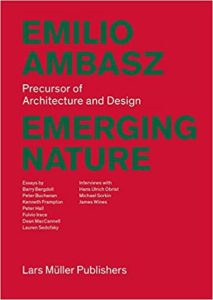 Emilio Ambasz: Emerging Nature
Emilio Ambasz: Emerging Nature
Precursor of Architecture and Design
by Emilio Ambasz & Other Contributors
Emerging Nature documents the work of the Argentinian architect, graphic designer and industrial designer Emilio Ambasz. The publication discusses his projects ranging from buildings and urban gardens including green façade vertical gardens to exhibition designs and everyday objects. The comprehensive volume features essays by various experts, interviews, a wealth of color photographs and drawings.
Ambasz’s main concern is to integrate nature and construction into architectural design, which is why he is regarded as one of the most important pioneers of Green Architecture. In his work a combination of landscape and architecture emerges, in which his respect for the environment and ecological sustainability becomes clear. A prime example of this is the Fukuoka Prefectural International Hall in Japan: a building that houses more than 100,000 m2 of exhibition spaces, theaters and offices is also an open green area in the form of a hanging garden.
The immense scope and diversity of Emilio Ambasz’ work is astounding. Besides architecture, he has made a name for himself with the various objects he designs; they range from diesel engines and streetlights to portable TV players, fold-out watches and innovative office chairs. Emilio Ambasz followed his widespread interests and left traces in all the disciplines he crossed on his professional path.
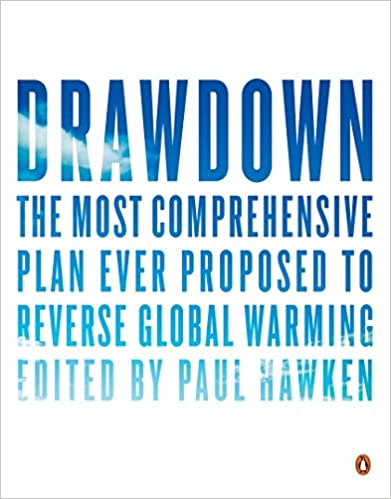 Drawdown: The Most Comprehensive Plan Ever Proposed to Reverse Global Warming
Drawdown: The Most Comprehensive Plan Ever Proposed to Reverse Global Warming
by Paul Hawken
The 100 most substantive solutions to reverse global warming, based on meticulous research by leading scientists and policymakers around the world.
In the face of widespread fear and apathy, an international coalition of researchers, professionals, and scientists have come together to offer a set of realistic and bold solutions to climate change. One hundred techniques and practices are described here—some are well known; some you may have never heard of. They range from clean energy to educating girls in lower-income countries to land use practices that pull carbon out of the air.
The solutions exist, are economically viable, and communities throughout the world are currently enacting them with skill and determination. If deployed collectively on a global scale over the next thirty years, they represent a credible path forward, not just to slow the earth’s warming but to reach drawdown, that point in time when greenhouse gases in the atmosphere peak and begin to decline. These measures promise cascading benefits to human health, security, prosperity, and well-being—giving us every reason to see this planetary crisis as an opportunity to create a just and livable world.
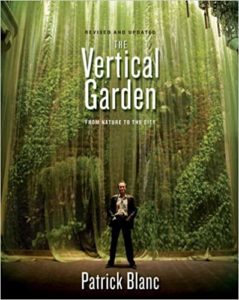 The Vertical Garden: From Nature to the City
The Vertical Garden: From Nature to the City
by Patrick Blanc
Patrick Blanc, botanist and artist, is world famous as the inventor of the Vertical Garden. This new, updated edition of his book, The Vertical Garden, includes his latest achievements and projects, which are bolder than ever.
Nobody is more familiar than Blanc with the secrets of the plants, from all over the world, that live on almost nothing, in the most unlikely situations, carpeting the forest understory in semi-darkness or clinging to rocky cliff faces. From Paris to Bangkok, from New York to Singapore, Blanc invites nature to flourish on the walls of museums, shopping malls, private homes, big hotels, and skyscrapers.
His works have brought a breath of fresh air to urban environments, changing our view of the cityscape, orchestrating and bringing art into the heart of the city, transforming concrete walls into refuges for biodiversity.
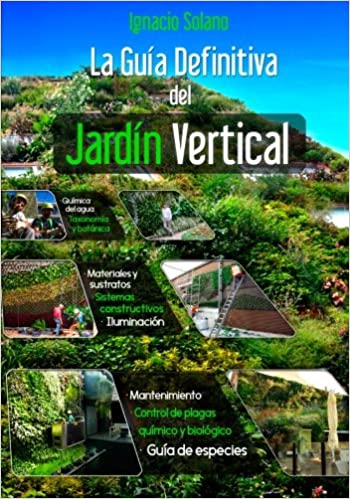 La Guia Definitiva del Jardin Vertical (Spanish Edition)
La Guia Definitiva del Jardin Vertical (Spanish Edition)
by Ignacio Solano
The Ultimate Guide to the Vertical Garden is not just a vertical garden book. It also exposes and analyzes all the technical aspects to take into account for the construction of vertical gardens step by step. Throughout the book Ignacio Solano deals with topics such as the different types of substrate, lighting, pest control or water chemistry, plants for vertical gardens, and the impact of these factors on the results of the projects. In addition, it includes a manual of the species of proven success in the creation of both interior and exterior green walls, which will make wall design a much easier task. The Definitive Guide to the Vertical Garden will provide you with the necessary tools and knowledge to make vertical gardens that last over time.
La Guía Definitiva del Jardín Vertical no es sólo un libro de jardines verticales. También expone y analiza todos los aspectos técnicos a tener en cuenta para la construcción de jardines verticales paso a paso. A lo largo del libro Ignacio Solano tratará temas como los diferentes tipos de sustrato, la iluminación, el control de plagas o la química del agua, las plantas para jardines verticales, y la repercusión de estos factores el resultado de los proyectos. Además, incluye un manual de las especies de éxito comprobado en la creación de paredes verdes tanto interiores como exteriores, que harán del diseño del muro una tarea mucho más sencilla. La Guía Definitiva del Jardín Vertical te proporcionará las herramientas y conocimientos necesarios para realizar jardines verticales que perduren en el tiempo.
 Sustainable Stormwater Management: A Landscape-Driven Approach to Planning and Design
Sustainable Stormwater Management: A Landscape-Driven Approach to Planning and Design
by Thomas W. Liptan
An essential addition to the landscape design library.
Nature devises ingenious systems for the management and delivery of water in all its phases. No additional infrastructure is required—the water systems are in place, naturally. But once the natural environment has been disrupted by human development, stormwater becomes an issue that requires intervention and ongoing management. Sustainable Stormwater Management, by leading expert Tom Liptan, provides landscape students and professionals with a green approach to landscape design. The hardworking book includes comprehensive information on how to design, install, and maintain a landscape for sustainable stormwater management. It addresses stormwater in the urban environment, relevant environmental and economic policies, and shares case studies of exemplary projects from around the world.
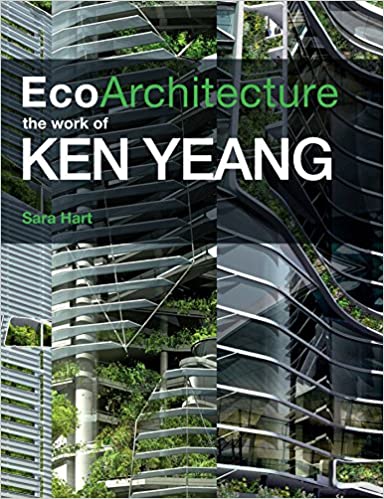 Ecoarchitecture: The Work of Ken Yeang
Ecoarchitecture: The Work of Ken Yeang
by Sara Hart
Ken Yeang is internationally recognized as the leading proponent of ecological design in architecture. In 2008, he was tipped by The Guardian to be one of the ’50 people who could save the planet.’ He has built over 200 buildings globally and published numerous books advocating an environmentally responsive approach to design. He is probably best known as the inventor of the green skyscraper; it was his innovative idea to incorporate bioclimatic features in a high-density building type. It is for this and his ecological urban design that he has gained a uniquely influential position within architecture. Though he has authored many books about his work and his ideas, this is the first definitive book to cover his forty-year career.
Featuring 22 of Yeang’s most significant projects, EcoArchitecture begins with his earliest work on environmental design, executed as a student at the Architectural Association and then a Phd student at Cambridge in the early 1970s, and with his most recent projects with Llewelyn Davies Yeang in London and TRHY in Kuala Lumpur. A preface by Lord Foster and an introductory essay by Professor John Frazer provide the full context of Yeang’s thinking. The main text by contributing editor of Architectural Record, Sara Hart, and lecturer and freelance author, David Littlefield, provide some critical reflection on the development of his work.
The next couple books are favorites that still hold up to time:
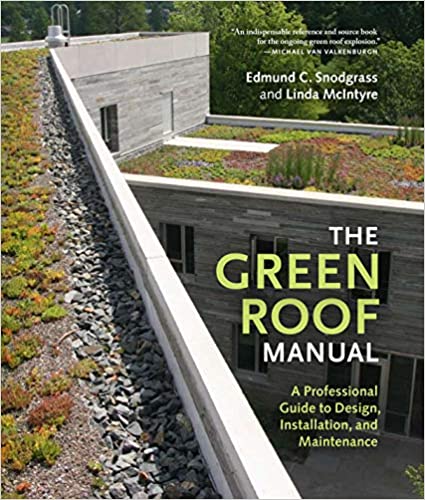 The Green Roof Manual: A Professional Guide to Design, Installation, and Maintenance
The Green Roof Manual: A Professional Guide to Design, Installation, and Maintenance
by Edmund C. Snodgrass
Green roofs—the ultimate in sustainable building practices—continue to generate enormous interest and enthusiasm among architects, landscape designers, and urban planners. Increasingly strict stormwater regulations and the appeal of LEED-related projects have also boosted the popularity and desirability of green roofs. No book has taken a comprehensive look at how to effectively adapt green-roof technology to the variable and extreme North American climate, and how to design projects that will function and endure as successfully as those in Germany, Switzerland, and other European countries.
This book fills the gap by providing an overview of practices and techniques that have been effective in North America. The author offer options regarding structure, function, horticulture, and logistics, as well as surveys of actual projects and analyses of why they have or haven’t succeeded. Approachable and reader-friendly, the manual clearly explains how these complex systems function and how to plan and carry out projects successfully from concept through construction and maintenance. Ideally suited to professionals (including architects, landscape architects, engineers, and designers) and their clients, it brings together key lessons from leaders in the field. Numerous photographs highlight the range of design possibilities and show green roofs both during construction and at various stages of maturity.
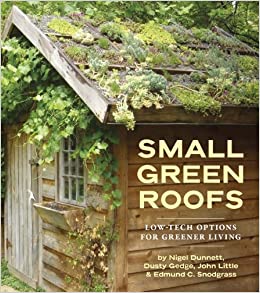 Small Green Roofs: Low-Tech Options for Greener Living
Small Green Roofs: Low-Tech Options for Greener Living
by Nigel Dunnett, Dusty Gedge, John Little, Edmund C. Snodgrass
The green roof movement has been limited to large-scale, professional endeavors and public buildings. But homeowners everywhere are catching onto the benefits of a green roof—water conservation, energy savings, and storm water management. In Small Green Roofs authors Dunnett, Gedge, Little, and Snodgrass profile ordinary homeowners who scaled green roofs down to the domestic level.
Small Green Roofs is the first book to focus on small-scale and domestic green roofs. More than forty profiles of small and domestic-scale projects of all shapes and sizes include green roofs on sheds, garden offices, studios, garages, houses, bicycle sheds, and other small structures, as well as several community projects. For each project, details are given for design, construction, and installation, as well as how-to tips on how the roof was planted and cared for.
For readers looking for inspiration when hiring a contractor or taking the adventurous step of building their own, Small Green Roofs provides the knowledge and encouragement to make it possible.
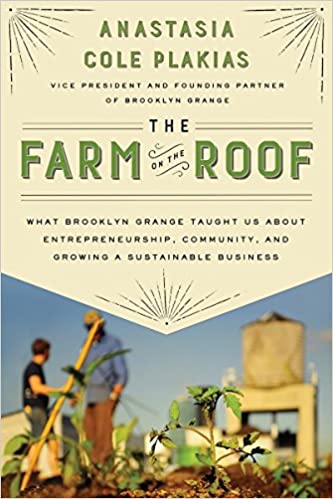 The Farm on the Roof: What Brooklyn Grange Taught Us About Entrepreneurship, Community, and Growing a Sustainable Business
The Farm on the Roof: What Brooklyn Grange Taught Us About Entrepreneurship, Community, and Growing a Sustainable Business
by Anastasia Cole Plakias
The founders of Brooklyn Grange, the world’s largest green rooftop farm, share their inspirational story of changing the world through entrepreneurship.
In their effort to build the world’s first and largest commercial green rooftop farm, the founders of Brooklyn Grange learned a lot about building and sustaining a business while never losing sight of their mission—to serve their community by providing delicious organic food and changing the way people think about what they eat. But their story is about more than just farming. It serves as an inspirational and instructional guide for anyone looking to start a business that is successful while making a positive impact.
In The Farm on the Roof, the team behind Brooklyn Grange tell the complete story of how their “farmily” made their dream a reality. Along the way, they share valuable lessons about finding the right partners, seeking funding, expanding, and identifying potential sources of revenue without compromising your core values—lessons any socially conscious entrepreneur can apply toward his or her own venture. Filled with colorful anecdotes about the ups and downs of farming in the middle of New York City, this story is not just about rooftop farming; it’s about utilizing whatever resources you have to turn your backyard idea into a sky-high success.
And for the kids!
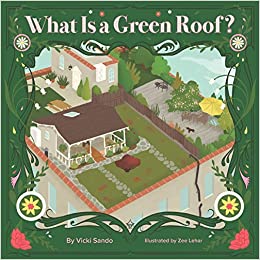 What Is a Green Roof?
What Is a Green Roof?
by Vicki Sando
Green roofs are an urban oasis in a patchwork of black tar and silver rooftops, but what exactly are they? This beautifully illustrated picture book is a perfect introduction to green roofs for children- and their adults. From the ancient Hanging Gardens of Babylon to present-day rooftop farms, green roofs have been built for centuries. They are receiving new attention because of the environmental benefits and the added value of ‘greening’ typically neglected spaces.
This book is packed with charming, informative illustrations and facts that provide everything you need to know about green roofs and why they help combat climate change. Also included is a glossary of green roof vocabulary and educational resources. Reading Level M-P or Grades K-3. This book is a great read-aloud book for families and classrooms. Named to Kirkus Reviews’ Best Books of 2020.
Happy Holidays
We hope that you’ll enjoy these selections and hopefully you can carve out some down time in the future after the hustle and bustle of the festivities to slow down, enjoy your family, and catch up on some reading in the New Year.
Warm wishes throughout your holiday season, and Season’s Greetings to all!
Disclaimer: Greenroofs.com is an approved Amazon Associate and thus we receive small commissions on the sale of any of the books in our Bookstore, and if you know anything about how this works then you know how small these commissions are.
 Greenroofs.comConnecting the Planet + Living Architecture
Greenroofs.comConnecting the Planet + Living Architecture






